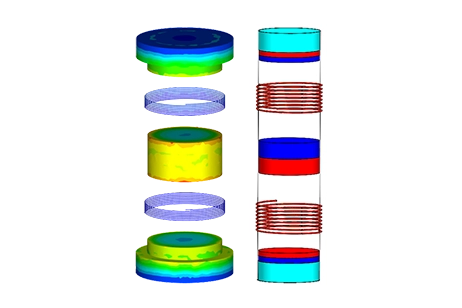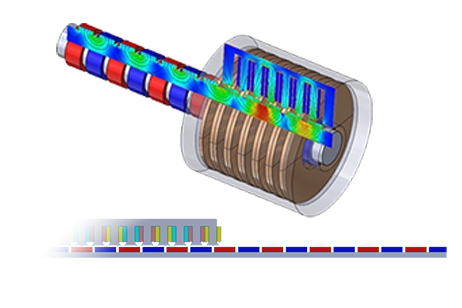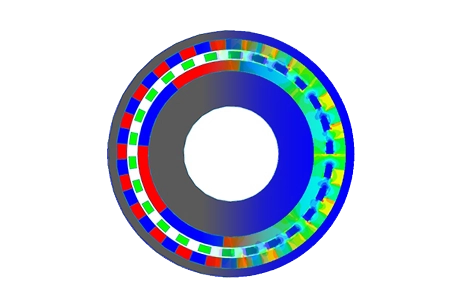Permanent Magnet and Magnetic Array Simulation
Simulate permanent magnets, Halbach arrays and magnetic couplings in 3D to predict fields, forces, torque and levitation performance.
Permanent magnets and magnet arrays appear in couplings, maglev systems, magnetic bearings, sensors and actuators. EMWorks models magnets, steel parts and coils on their 3D geometry, computing flux density, force, torque, stiffness, cogging and stray fields so you can adjust magnet grade, orientation, spacing, back-iron and shielding before building hardware.
-

Magnetic Levitation Vehicles
Use EMWorks to model magnetic levitation vehicles and sub-systems on full 3D geometry. Compute levitation force, guidance, stability, losses, and thermal limits so you can refine magnets, coils, and tracks before building prototypes. -

Permanent Magnets
Use EMWorks to model permanent magnets and magnet arrays—inside motors, actuators, sensors, and couplers. Compute fields, forces, torque, and demagnetization so you can refine geometry and materials before prototyping. -

Magnetic Gears
Use EMWorks to model coaxial, axial, and other magnetic gear topologies in full 3D. Predict transmitted torque, torque ripple, losses, efficiency, and eddy currents so you can refine pole counts, magnet arrangements, and clearances before prototyping.

